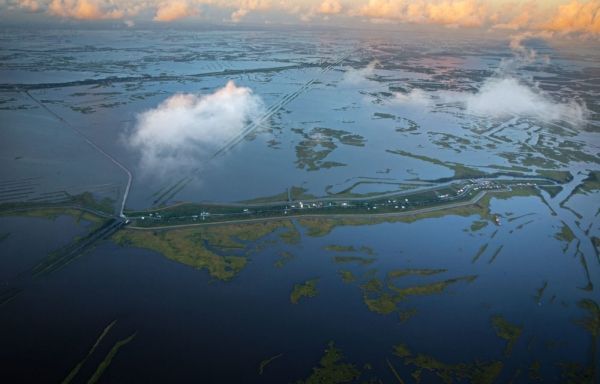Spring arrived early this year for Isle de Jean Charles. The southern gulf breeze is refreshing after an atypical freeze here deep in the Louisiana marsh. It’s late February and the thick vegetation is already sprouting a bright, luxuriant green. The birdsong threatens to drown out conversation. In a matter of weeks, shrimp, speckled trout, and redfish will be running. For members of this tribe of Biloxi-Chitimacha-Choctaw Indians, this is nothing short of paradise.
So why is everyone moving away?
Of the 35 residential structures left on the island, many stand empty, slowly rotting back into the landscape. Due to unprecedented soil subsidence, sea level rise, and the thousands of oil and gas canals that have allowed saltwater intrusion and erosion, the once-wooded landscape is slowly disappearing beneath the sea.
Since 1930, Louisiana’s coastal plain has lost more than 2,000 square miles of land – about the size of Delaware, according to the U.S. Geological Survey. Isle de Jean Charles, the historical homeland of the Biloxi-Chitimacha-Choctaw Indians, is the most desperate example of the state’s vanishing coast.
Read more at Yale Environment 360
Image: Isle de Jean Charles today is a narrow strip of land with a small enclave of houses in southern Louisiana's vast wetlands. (Credit: TED JACKSON | THE TIMES-PICAYUNE)


